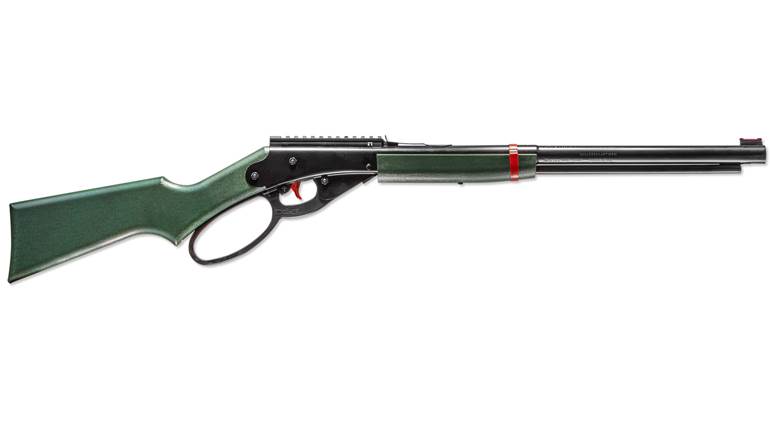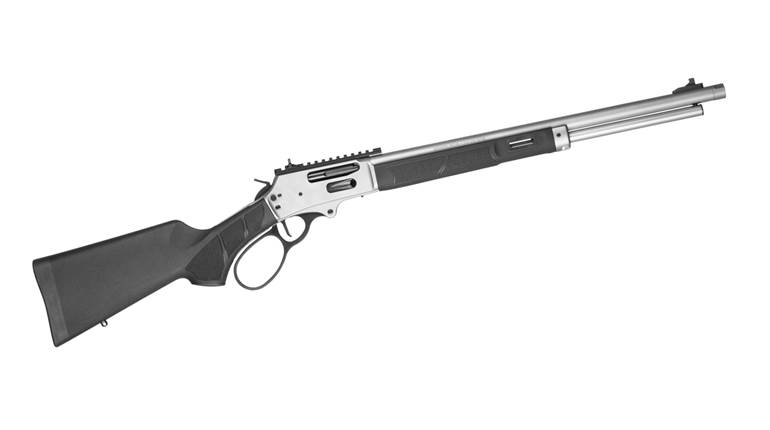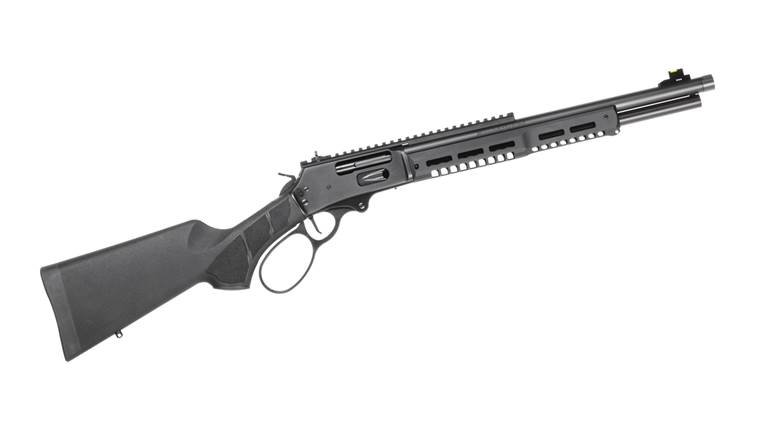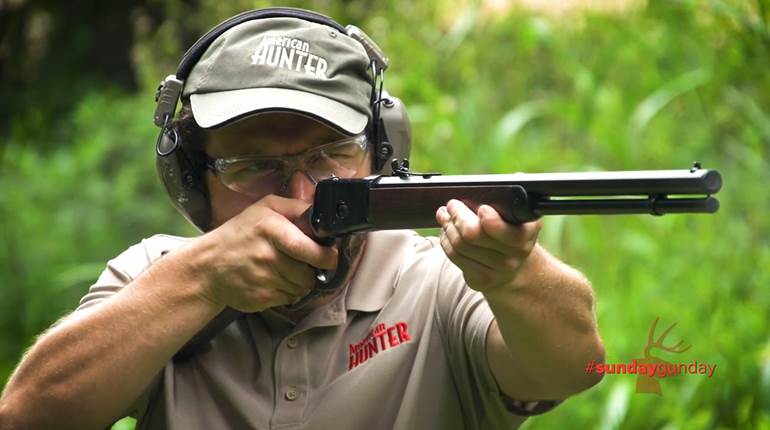
The well-known phrase “baseball, hot dogs and apple pie” supposedly came from a World War II survey that asked servicemen what things from home they missed the most. While it can be argued that those things really had their origins in England or Western Europe, no one can deny that they have come to symbolize the American way of life.
Thanks to our Second Amendment, owning a gun is also a symbol of what it means to be an American. We possess numerous handguns and shotguns, but we’ve really always been a nation of riflemen. Throughout history, the rifle has helped settle the country, fight our wars, provide home security and food for the table. So, it would not be a stretch to say something is “as American as baseball, hot dogs, apple pie and rifles.”
Of all rifle designs, none is more American than the lever-action. It came upon the scene in the middle of the 19th century, served during the Civil War and various Indian wars and has taken more deer than any other rifle. Many historical paintings and photographs show cowboys, Indians, soldiers and mountain men proudly posing with a lever-operated rifle. In the world of fiction, lever guns are as present as the single-action revolver in every western novel, movie or television show. Just try to picture John Wayne tying his horse to a hitching post without a Winchester protruding from the saddle scabbard. (Trivia question: What was the only motion picture to be named after a firearm? Answer below.)
For much of the last century, the term “deer rifle” meant a lever-action Winchester or Marlin. Their handling qualities are ideal for the stalking woods hunter or one on horseback. The flat-sided receiver hangs comfortably in the hand and slides easily in and out of a saddle scabbard. While today’s long-range advocates hunting from tree stands love their bolt-action magnums, the lever-action is the real deal for the traditionalist who likes to stalk his game and shoot from his hind legs. I killed my first deer with a Winchester .30-30 when I was a teenager, and to this day, I don’t feel right walking through the woods in deer season with any other rifle in my hand.
The lever-action rifle was not, as some believe, invented by Winchester. In 1848, the Volition Repeating Rifle was the first lever-gun to receive a patent, but it was a complicated design and never made it to production. The Robbins & Lawrence Company bought the patent and produced a few rifles, but the venture was not successful and the doors closed in 1852. Horace Smith and Daniel Wesson — yes, that Smith and Wesson — bought the patent and, with several investors formed the Volcanic Repeating Arms Company in 1855. One of those investors was Oliver Winchester.
The Volcanic Rifle also was not much of a success. Smith and Wesson left to start their revolver dynasty and Oliver Winchester bought out the other stockholders. He changed the name to New Haven Arms Company and hired Benjamin Tyler Henry to improve the Volcanic design. The result was the famous Henry rifle. It was introduced in 1860 and was used by a few U.S. Army units during the Civil War. Confederate soldiers called the Henry “that damn Yankee rifle you load on Sunday and shoot all week!”
Another lever-operated rifle, the Spencer, was also introduced in 1860. It was very different from the Volcanic and Henry in that its tubular magazine was in the buttstock instead of under the barrel, and the shooter had to manually cock the hammer after ejecting a spent cartridge and loading a new one with the lever. The Spencer also saw limited use during the Civil War.
After the war, New Haven Arms became the Winchester Repeating Arms Company, and an improved version of the Henry became the first Winchester repeating rifle, the Model 1866. The famous “Gun That Won the West,” the Winchester Model 1873, came along during that year, followed three years later by the larger Model 1876. (The answer to the trivia question is “Winchester 73,” starring James Stewart, 1950.)
Then in 1883, the great gunsmith and inventor John M. Browning began a working relationship with Winchester that lasted 20 years. During this period, he designed and developed many rifles and shotguns for Winchester. By the beginning of the 20th century, the term lever-action had become synonymous with Winchester, thanks in large part to John Browning.
By far, the most successful Browning-designed Winchester was the Model 1894, the best-selling rifle in American history. The first two chamberings were the .32-40 and .38-55, both black powder cartridges. Then, in 1895, Winchester added its new .30 WCF (Winchester Center Fire), the first American smokeless-powder hunting cartridge, to the Model 1894 line. Later known as the .30-30, it soon became the standard to which all deer cartridges were judged and to this day remains a favorite with many hunters.
With more than 7 million rifles mad, there are more Model 94s on the market than any other hunting rifle in the world. Production stopped in 2006 when Winchester closed its New Haven plant, but for those who haven’t heard, the Model 94 is back for 2011.
America’s second most popular lever-action gunmaker has been Marlin. Founder John Marlin had worked for Colt during the Civil War and, in 1870, began making his own derringers and revolvers. In the early 1890s, he developed two lever-operated rifles, the Model 1891 and Model 1893. These later evolved into the Model 39 and 36, respectively. The Model 39 was a .22 rimfire and has the distinction of being the rifle with the most longevity in the world. Known as the 39A since 1937, it has been in continuous production for 120 years.
The Model 36 was given a few improvements and became the 336 in the 1950s. Over the years, the rivalry between the Winchester 94 and Marlin 336 became somewhat like that of Ford vs. Chevy. Many hunters picked one or the other based on what Dad or Granddad used.
One major difference between Marlin and Winchester lever guns was Marlin’s side-ejection. Winchesters ejected the spent casings straight up, which was a problem for those who wanted to use a scope. It took a while, but Winchester came up with its Angle-Eject answer in the early 1980s, which ejected the spent case to the right and at a slightly upward angle, allowing a scope to be mounted on top of the receiver like the Marlin. Many users of lever-action carbines, however, prefer open iron sights.
Another lever-operated rifle that was uniquely American was the Savage Model 1899. An improved version of the Savage 1895, it was very different from the Winchesters and Marlins. With its futuristic streamlined receiver, hammerless action and rotary magazine, it was a rifle for a new century. It was considered to be more accurate than the older lever-action rifles, in part due to its hammerless design, which made for a faster lock time. The spool-type rotary magazine also allowed the use of ballistically superior pointed bullets, which are unsafe in tubular magazines.
In addition to cartridges like the .22 High-Power, .303 Savage and .30-30 Win., the Savage rifle was capable of handling higher-pressure rounds. In 1915, Savage made big news when it chambered the Model 1899 for its new .250-3000 — the first commercial cartridge with a 3,000 fps muzzle velocity — and a few years later, for the .300 Savage. Both cartridges became very popular and have their fans to this day. Eventually the Model 99, as it later became known, was made for modern rounds like .243 and .308 Winchester.
Even though we are now well into the 21st century, the lever-action rifle is far from becoming obsolete. The Model 94 is back, the Marlin has never gone away and Mossberg’s 464, which was introduced in 2008, seems to be a big success. Browning’s BLR has been around for more than 40 years, several companies are importing Winchester replicas and the Henry name has been back since 1997. Its lever-action rimfires and center-fires have all been made in the U.S.A., in Brooklyn, N.Y., and New Jersey, to be exact. Now, that’s about as American as baseball, hot dogs and apple pie.





































